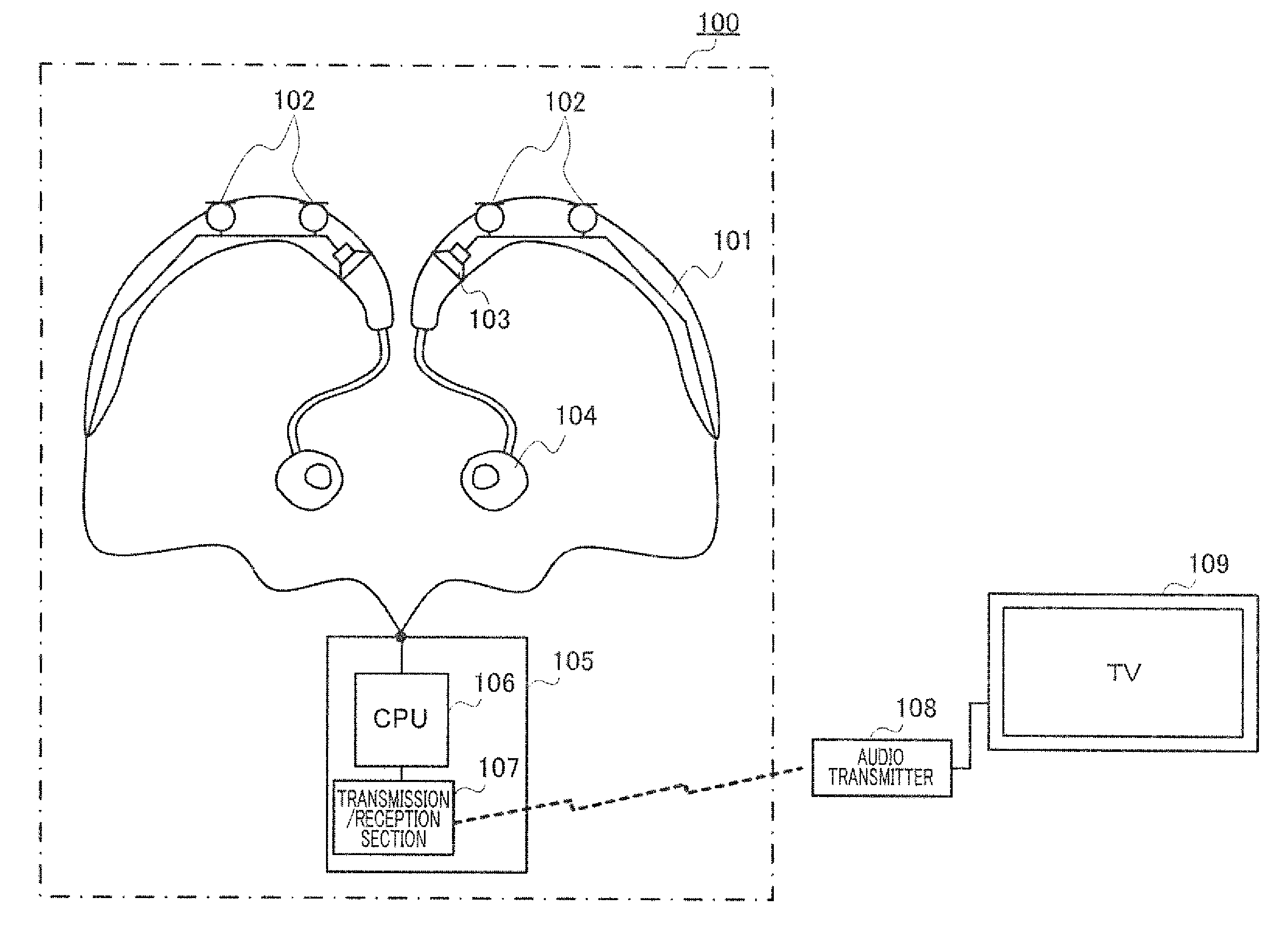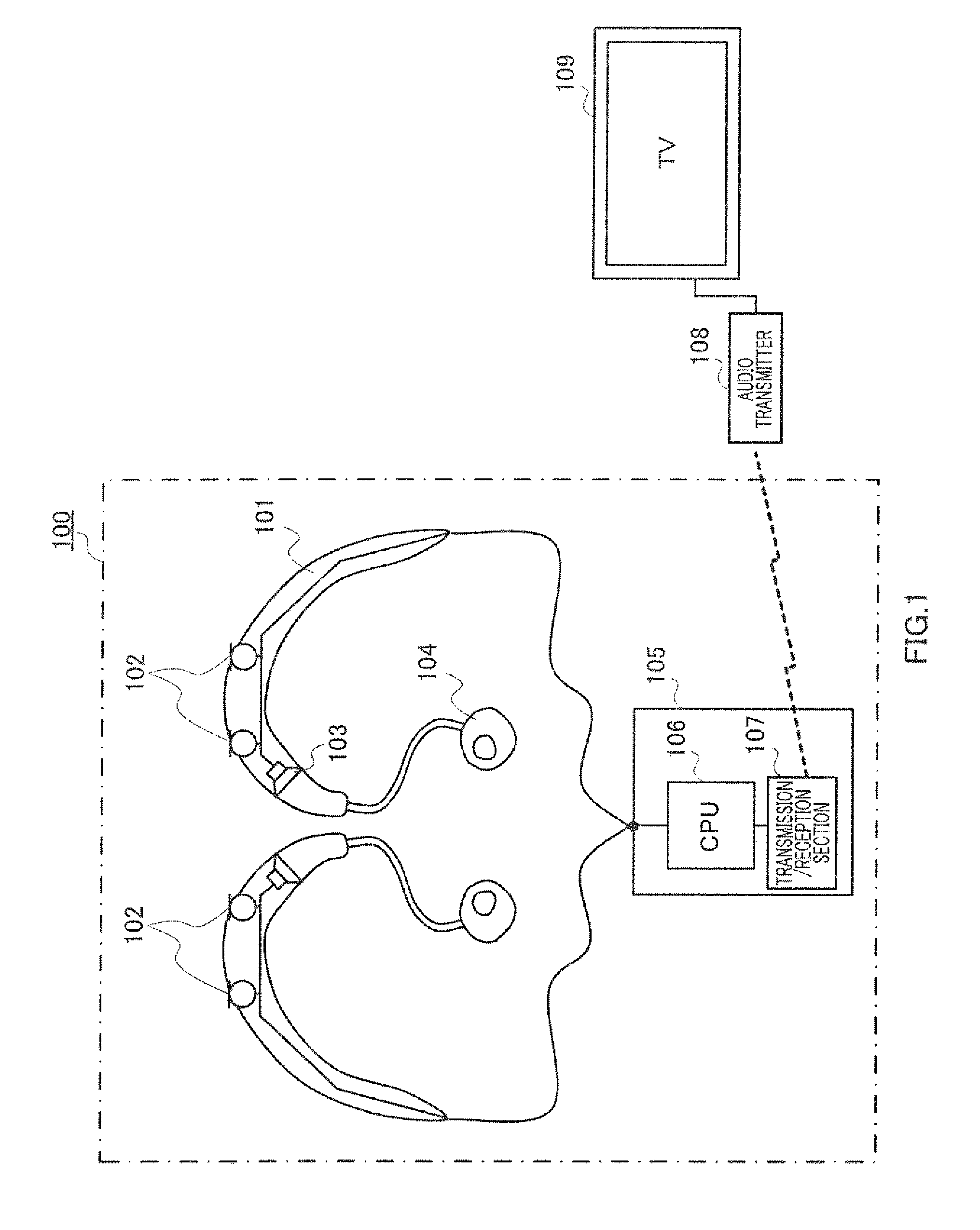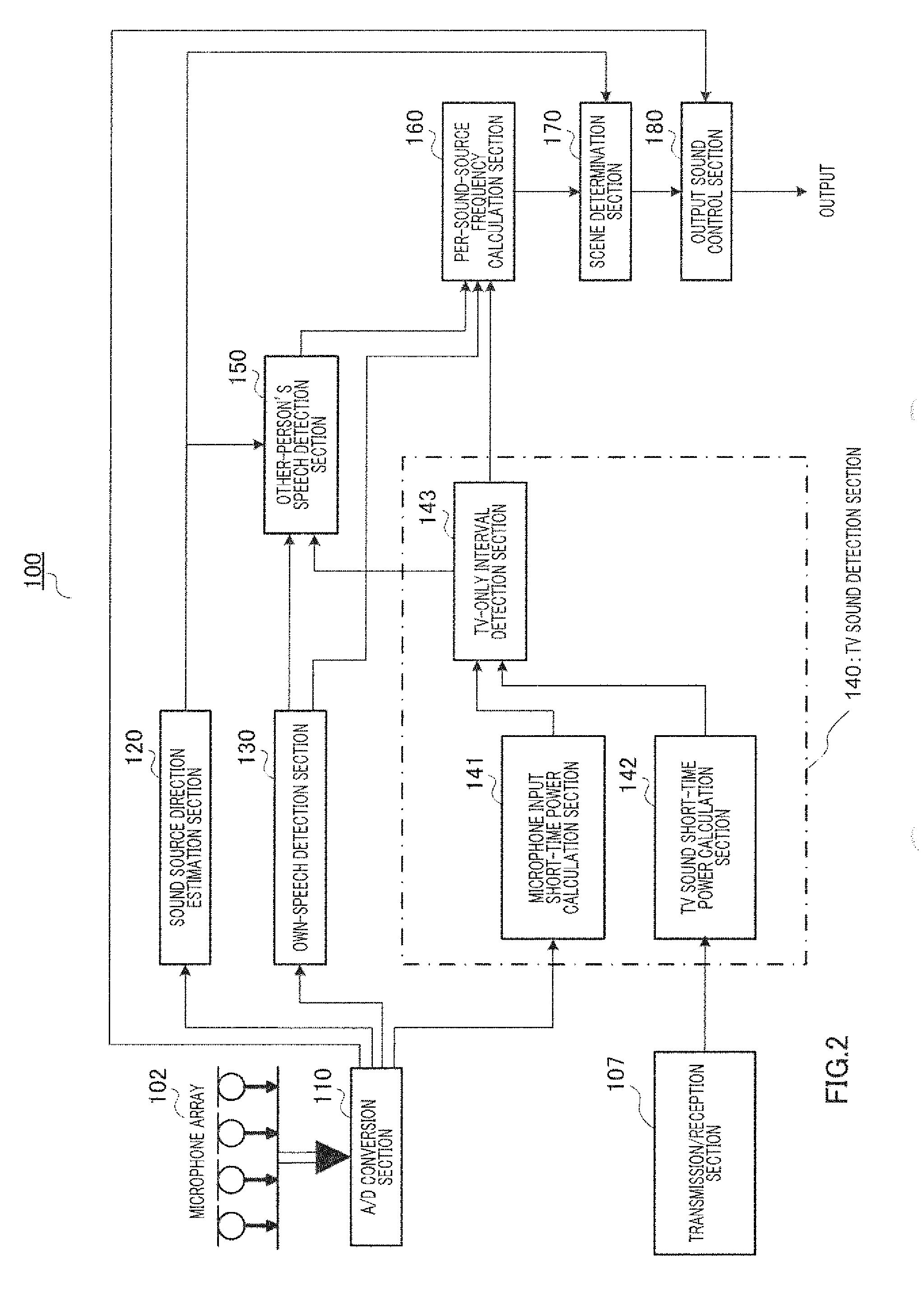Hearing aid, signal processing method, and program
a signal processing and hearing aid technology, applied in the field of hearing aids and signal processing methods, can solve the problems of difficult to hear the voice of a person who is conversing with, the sound of a tv, and the difficulty of small sounds in a noisy environment, so as to achieve the effect of easy hearing, easy to hear, and easy to hear
- Summary
- Abstract
- Description
- Claims
- Application Information
AI Technical Summary
Benefits of technology
Problems solved by technology
Method used
Image
Examples
embodiment
[0033]FIG. 1 is a drawing showing the configuration of a hearing aid according to an embodiment of the present invention. This embodiment is an example of application to a remotely controlled hearing aid of a type in which the hearing aid body and earphones are separate (hereinafter abbreviated to “hearing aid”).
[0034]As shown in FIG. 1, hearing aid 100 is provided with hearing aid housings 101 that fit around the ears, and remote control apparatus 105 connected to hearing aid housings 101 by wires.
[0035]There are two identically configured hearing aid housings 101, for the left and right ear respectively. Left and right hearing aid housings 101 each have microphone array 102 comprising two microphones that pick up ambient sound installed in a front-and-rear arrangement in the upper part, for a total of four microphones.
[0036]Each hearing aid housing 101 incorporates speaker 103 that outputs sound that has undergone hearing enhancement processing or TV sound, and speaker 103 is conn...
PUM
 Login to View More
Login to View More Abstract
Description
Claims
Application Information
 Login to View More
Login to View More - R&D
- Intellectual Property
- Life Sciences
- Materials
- Tech Scout
- Unparalleled Data Quality
- Higher Quality Content
- 60% Fewer Hallucinations
Browse by: Latest US Patents, China's latest patents, Technical Efficacy Thesaurus, Application Domain, Technology Topic, Popular Technical Reports.
© 2025 PatSnap. All rights reserved.Legal|Privacy policy|Modern Slavery Act Transparency Statement|Sitemap|About US| Contact US: help@patsnap.com



